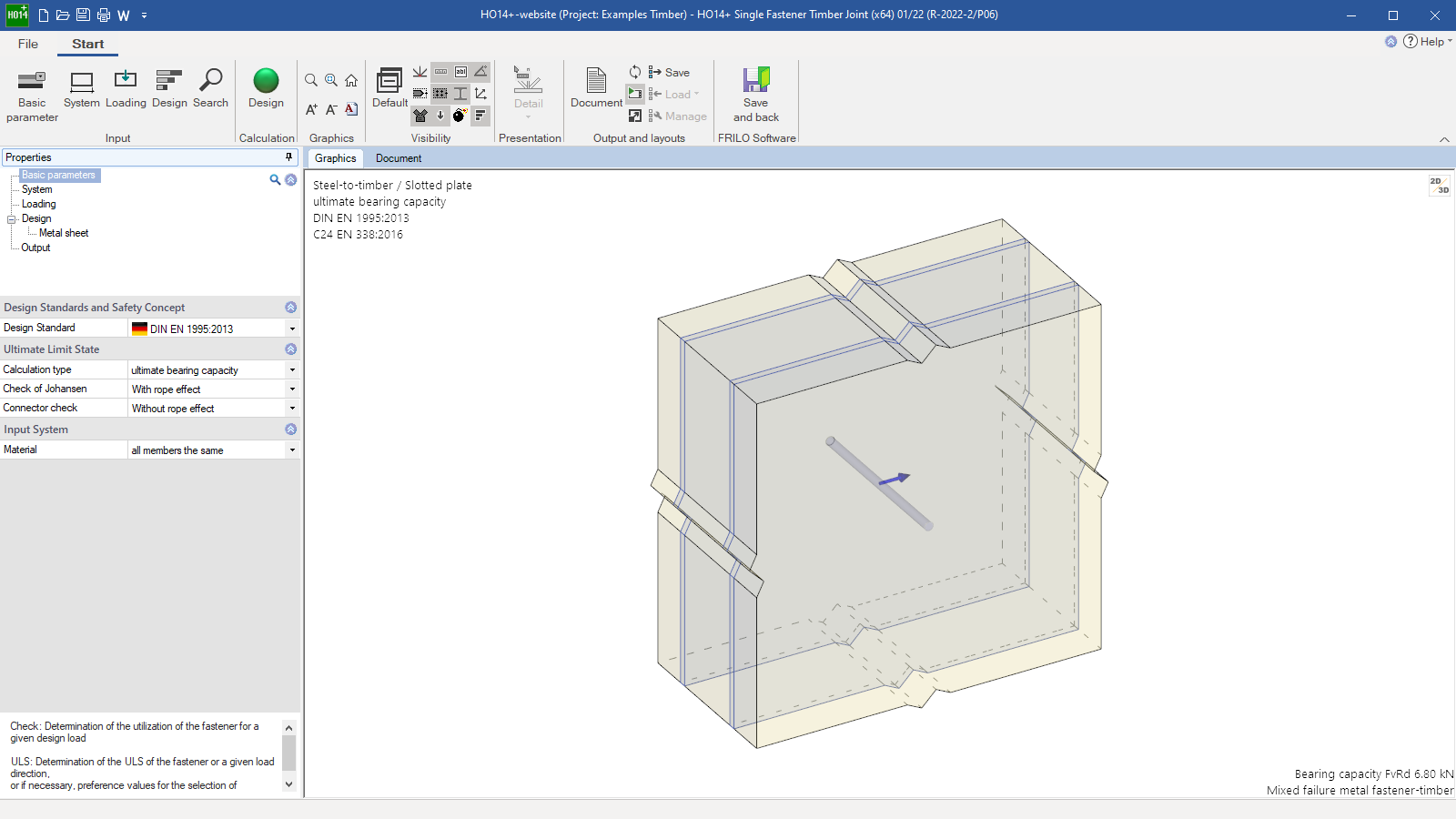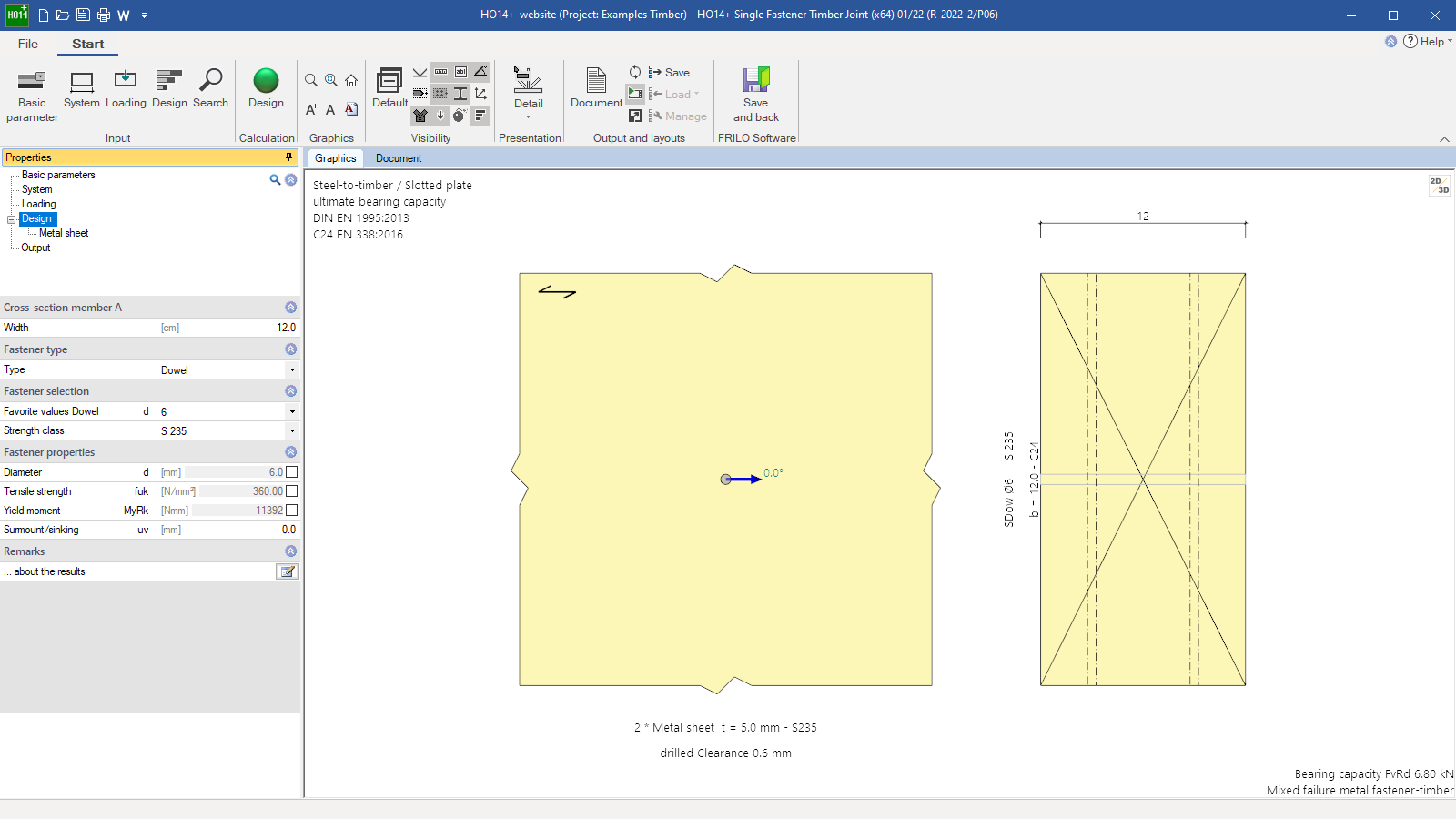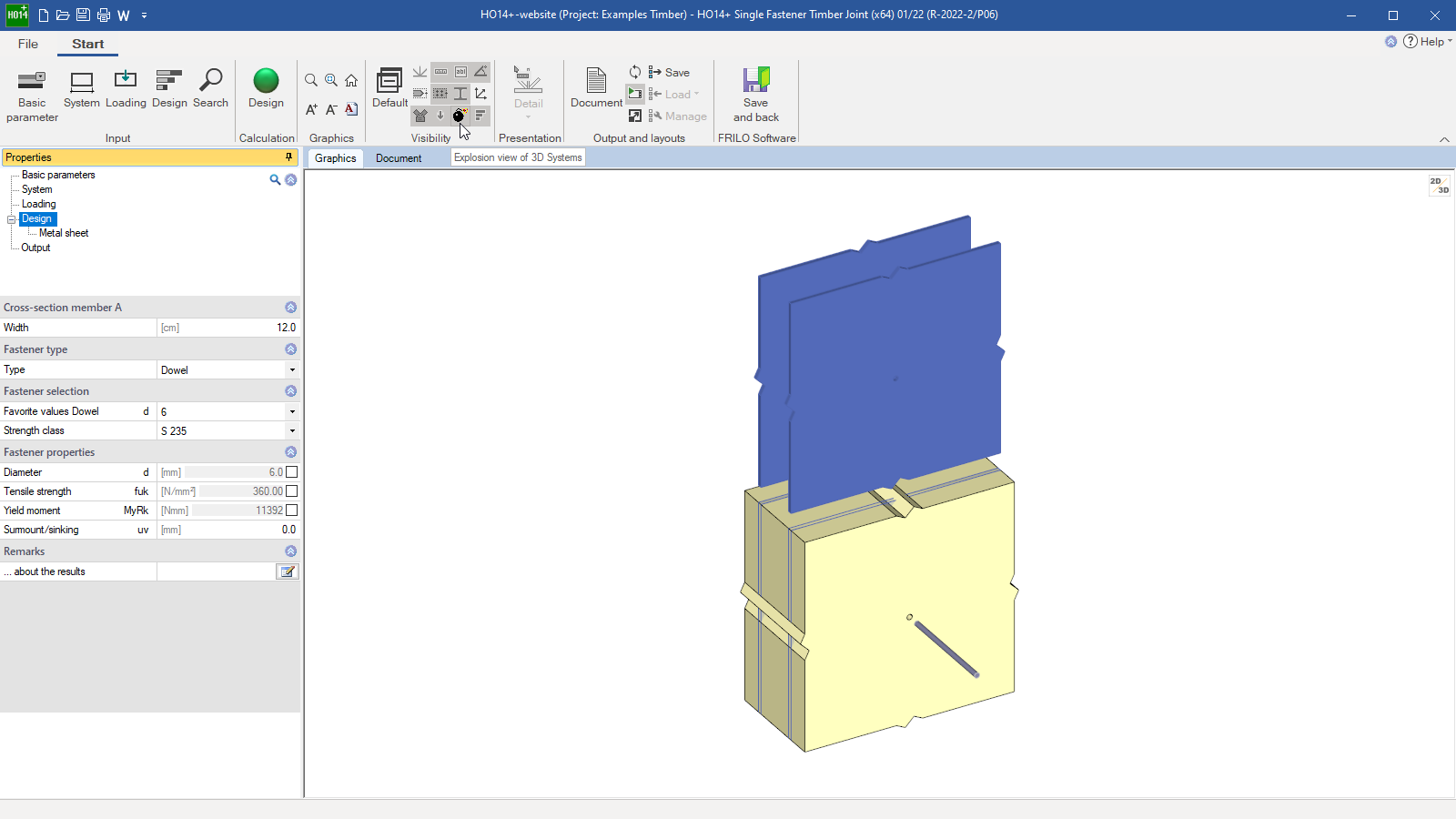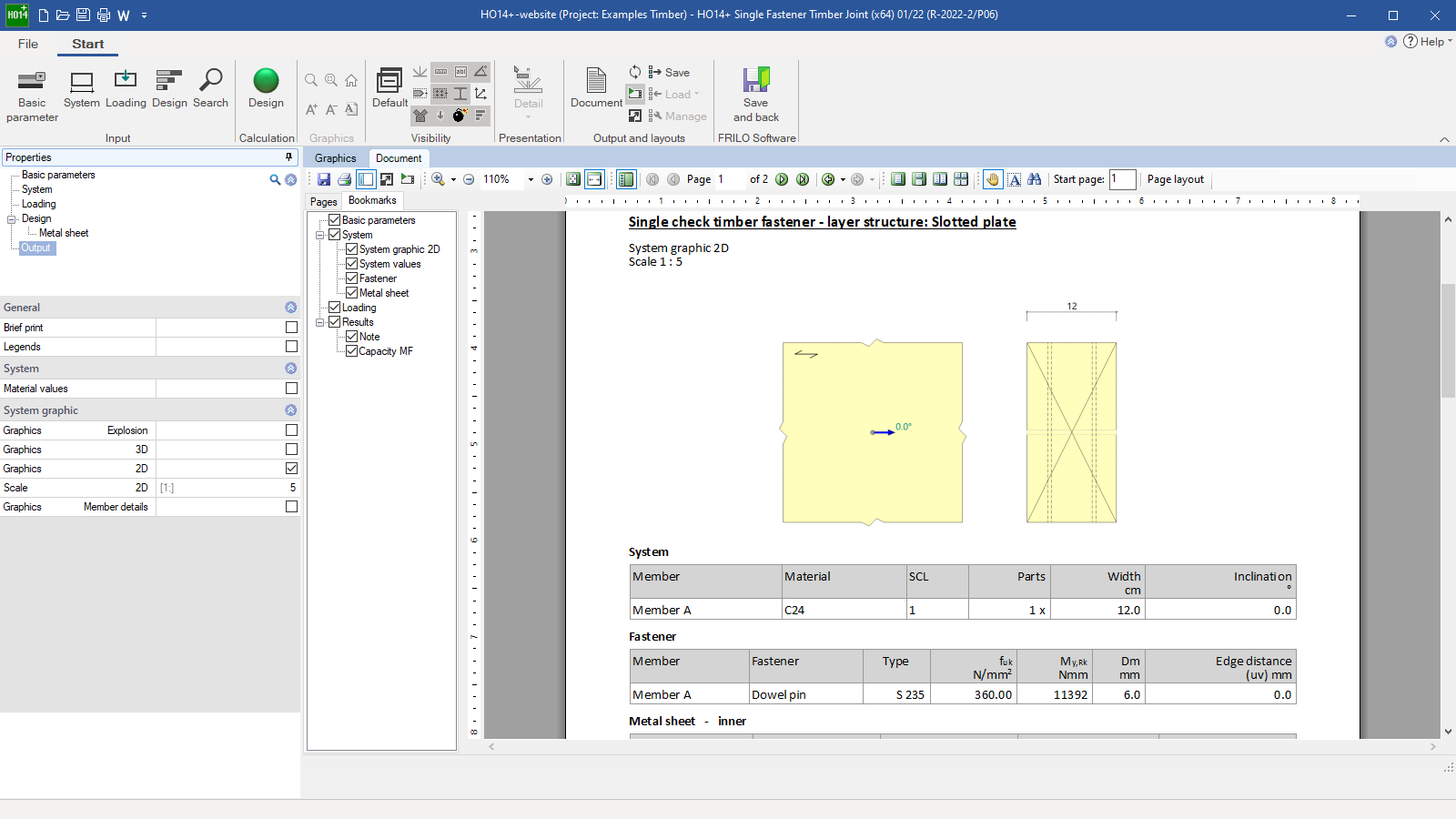
Single Fastener Timber Joint
HO14+
The HO14+ program can be used to calculate the load-bearing capacity of a common single fastener in timber construction. In this calculation, the given angle between the applying force and the direction of the grain is taken into account. Under normal conditions, the failure of the fastener is preferred to the failure of the timber. Therefore, the program gives detailed information about the failure mechanism and suggests automatically a fastener diameter that is compatible with the given timber material thickness.
Discover now more programs from the section Timber & Roof!
SHOW MOREMaterial
- Softwood of the strength classes C14 to C50
- Hardwood of the strength classes D18 to D80
- Glulam of the strength classes GL20c/h to GL32c/h
- User-defined material
Structural system
- Timber-to-timber connection
- Steel-to-timber connection
- Chord: continuous/with pinned joint/ending on the left/ending on the right
- Position of the chord: on top/on bottom
- With/without chord
- With/without diagonal strut, on the left/on the right
- Supported node
Loads
- Posts: axial forces
- Diagonal struts: axial force and shear force
- Chord timber-to-timber: moment load in the chord from external loading and eccentricity of the fasteners
Fasteners
- Dowel pins
- Fit bolts/bolts
- Nails (smooth/profiled)
- Special dowels
Design
The load-bearing capacity of the fasteners is verified following Johansen’s theory (accurate verification method as per EN 1995, 8.3). Suspension effects can be taken into account, if applicable.
The design of the plate connection is based on the geometry of the section of the member connection and the permissible edge distances of the fasteners. The result provides an area over which the fasteners can be distributed in rows. The crack lines in the grain direction run in parallel to the edge of the component and are arranged symmetrically to the member axis. The crack lines transverse to the direction of force can optionally run perpendicular to the component edge or in parallel to the section at the member connection.
The permissible area for the arrangement of the fasteners in a timber-to-timber connection results from the intersection of the connected members and the minimum edge distances of the fasteners.
The crack lines in the direction of force run in parallel to the load-introducing component and are symmetrical to the member axis of the latter. The crack lines that are transverse to the direction of force run in parallel to the edge of the load-transferring component.
For the number of fasteners, at least two fasteners are assumed in the connection area. In the area of the continuous chord, at least four fasteners are arranged. Alternatively, a fastener alone can be provided in the connection area using the basic setting “Verification”. At least, four shear areas must be effective in this case. For nails and screws, a minimum quantity of two applies as a rule.
Based on the load-bearing capacity, the program determines the required number of fasteners, checks the minimum spacing to be complied with and performs the necessary verifications on the adjoining components in the area of the joint.
Document file formats
- Word
- Printer
Output
User-defined scope.
Timber construction
- DIN EN 1995 as well as DIN 1052
- ÖNORM EN 1995
- NTC EN 1995
- BS EN 1995
- PN EN 1995
News

FRILO launches version 2024-2 with powerful updates for structural analysis and design
Highlights include the optimised design of Schöck Isokörbe®, the advanced integration of DC foundation engineering programs into the FRILO environment and new RSX interfaces for detail verifications in steel construction.

Load determination for eight-floor perimeter block development with FRILO Building Model
Find out how the structural engineers at bauart Konstruktions GmbH determined the loads for an eight-floor perimeter block development in Frankfurt’s Europaviertel district using the GEO from FRILO.





